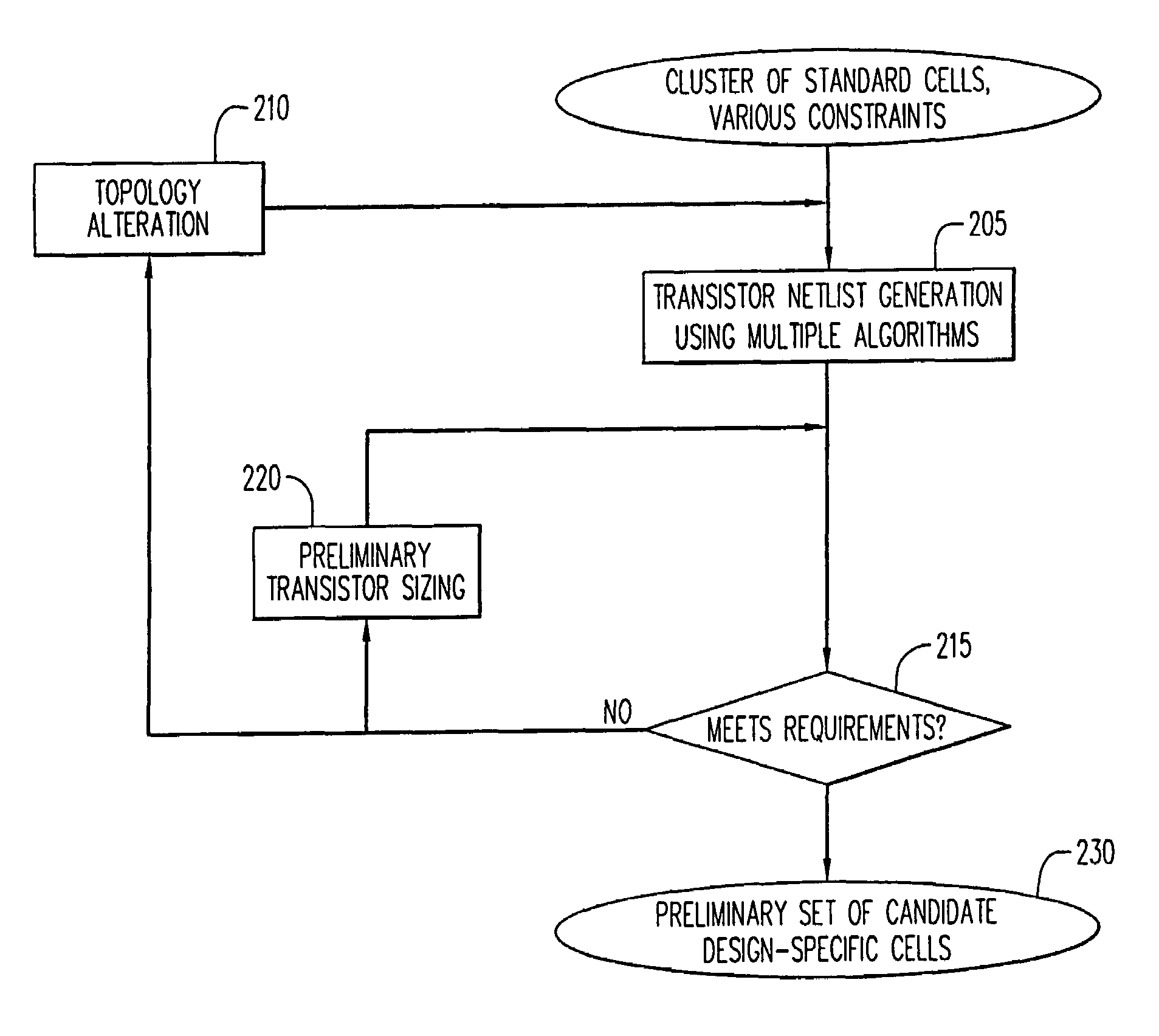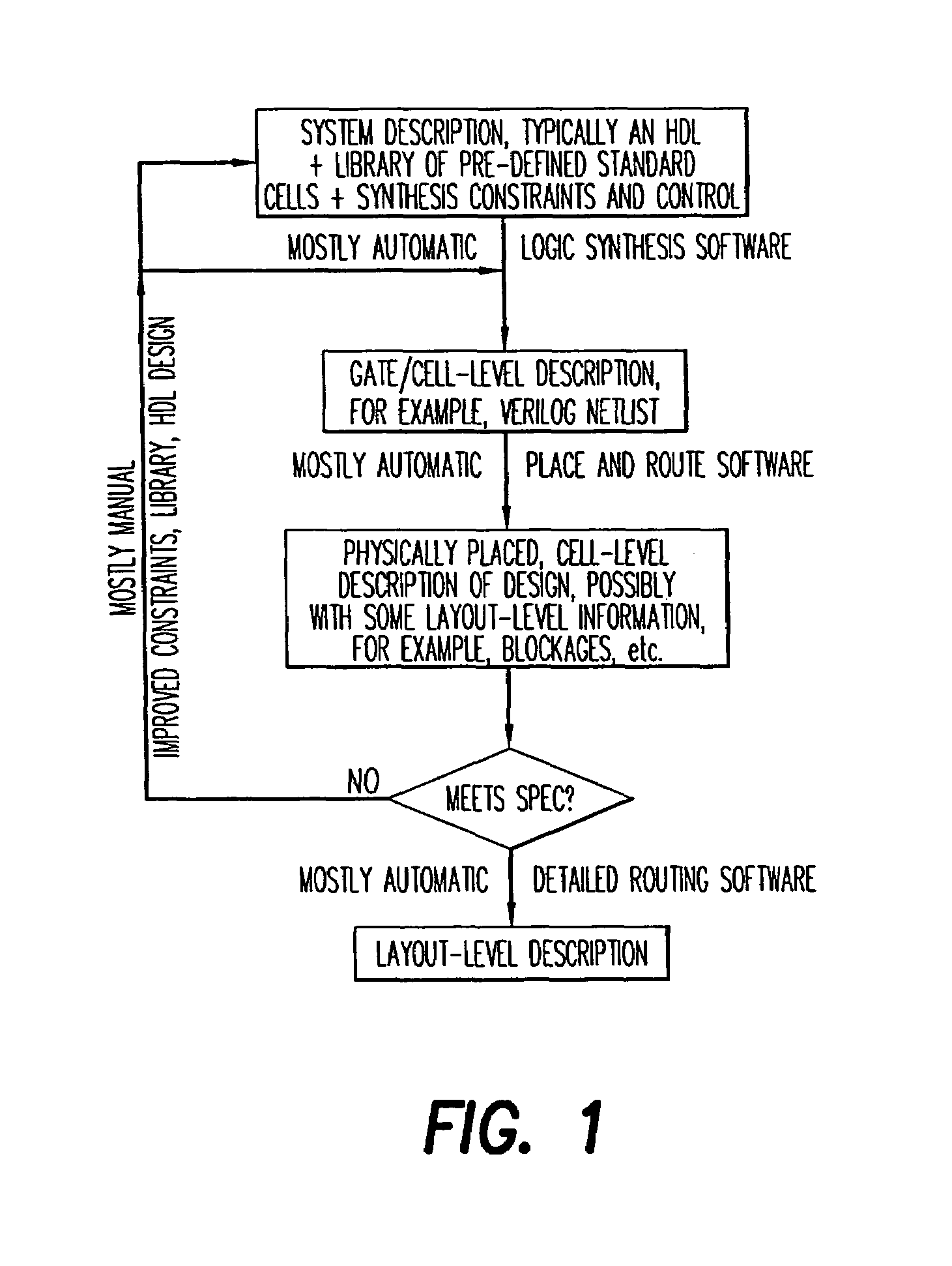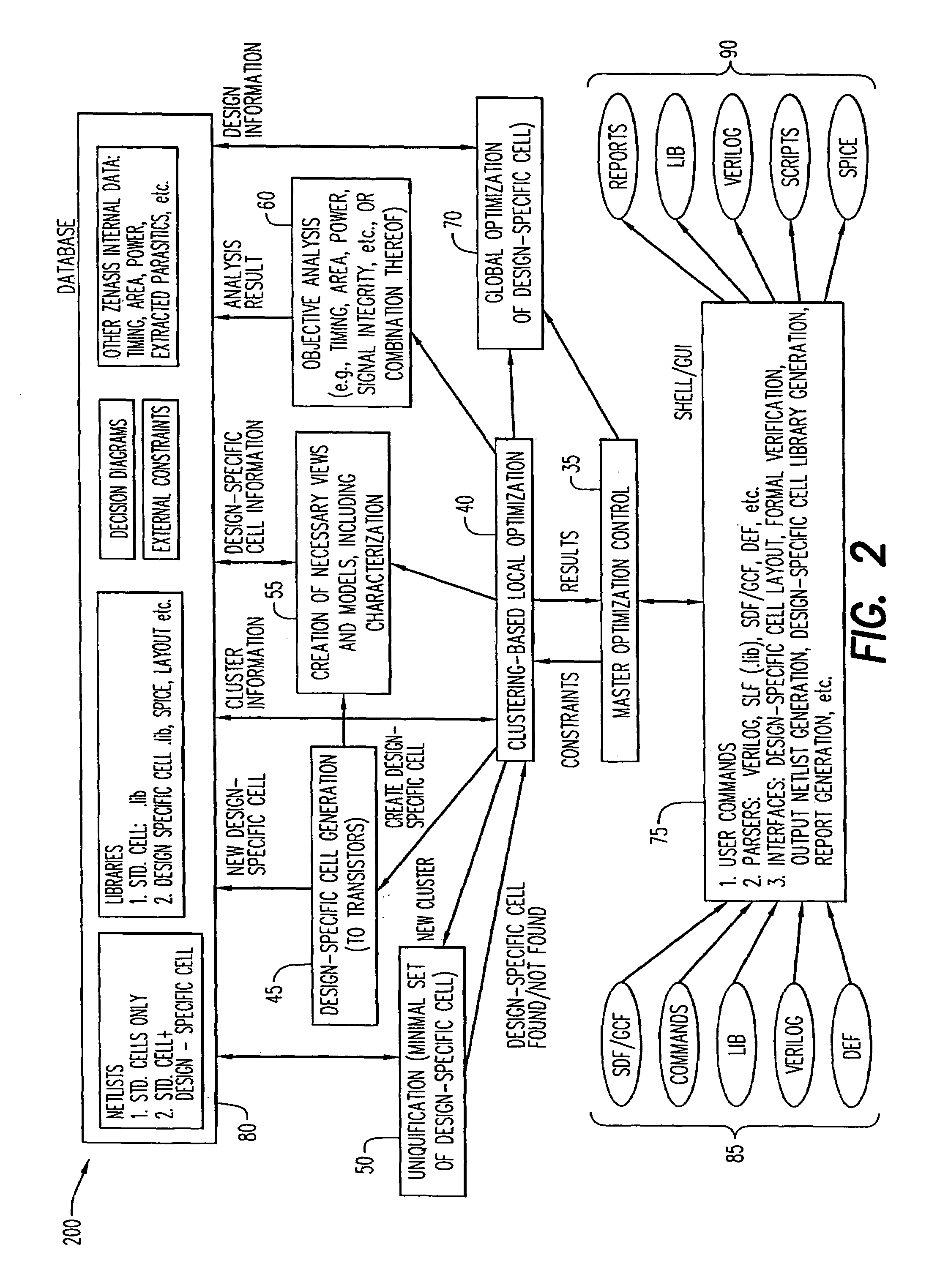Process for automated generation of design-specific complex functional blocks to improve quality of synthesized digital integrated circuits in CMOS using altering process
a technology of complex functional blocks and process, applied in the field of automatic system and process for creating highly optimized transistorlevel building blocks, can solve the problems of large cost and business implications, poor final design quality, and relatively poor resultant design quality
- Summary
- Abstract
- Description
- Claims
- Application Information
AI Technical Summary
Benefits of technology
Problems solved by technology
Method used
Image
Examples
Embodiment Construction
[0023]The present invention is a fully automated process capable of creation and optimization of design-specific, complex functional blocks, hereinafter designated design-specific cells. The use of design-specific cells in an automated IC design process has a very significant impact on the quality of the resultant design. The process of the present invention, in one aspect thereof, bridges the gap between designs created automatically and handcrafted designs. A fuller understanding of the overall organization of an IC design process using design-specific cells created in accordance with the present invention for designing high-quality, design-specific ICs can be had by referring to FIG. 2. The process of generating the design-specific IC design building blocks is represented as design-specific cell generation process 45.
[0024]In clustering process 40, prior to the invocation of the creation of the design-specific cell(s), the functionality of each target design-specific cell is iden...
PUM
 Login to View More
Login to View More Abstract
Description
Claims
Application Information
 Login to View More
Login to View More - R&D
- Intellectual Property
- Life Sciences
- Materials
- Tech Scout
- Unparalleled Data Quality
- Higher Quality Content
- 60% Fewer Hallucinations
Browse by: Latest US Patents, China's latest patents, Technical Efficacy Thesaurus, Application Domain, Technology Topic, Popular Technical Reports.
© 2025 PatSnap. All rights reserved.Legal|Privacy policy|Modern Slavery Act Transparency Statement|Sitemap|About US| Contact US: help@patsnap.com



